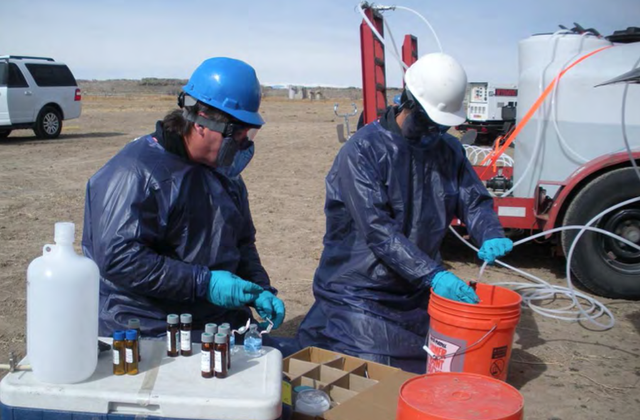EPA fracking investigation in Wyoming revisited after objections
Ars Technica » Scientific Method 2012-10-23

In December of last year, Ars reported on a major EPA study in Pavillion, Wyoming that concluded hydraulic fracking operations there had contaminated the groundwater aquifer. While there wasn’t a clear link to contamination detected in some shallow private water wells, EPA believed the deeper contamination was very likely related to fracking. This determination came primarily from two deep monitoring wells that EPA had installed for the investigation.
Encana, the gas exploration company that owned the natural gas wells, disagreed vehemently. They asserted that EPA had drilled monitoring wells into a zone where gas was naturally present. As for the other compounds EPA detected in the wells, which were known to be components of fluids used during fracking, Encana said these were likely introduced into the aquifer during the drilling of the monitoring wells. EPA had foreseen this objection, and went to great lengths to avoid contaminating the monitoring wells. But Encana was not satisfied.
In the end, the EPA, the United States Geological Survey (USGS), the Wyoming Geological Survey, the Wyoming Department of Environmental Quality, the Wyoming Oil and Gas Conservation Commission, and the Wyoming Water Development Office met to discuss these objections. They decided that the EPA and USGS would carefully re-sample the deep monitoring wells to verify the results EPA had gotten previously.
Read 5 remaining paragraphs | Comments